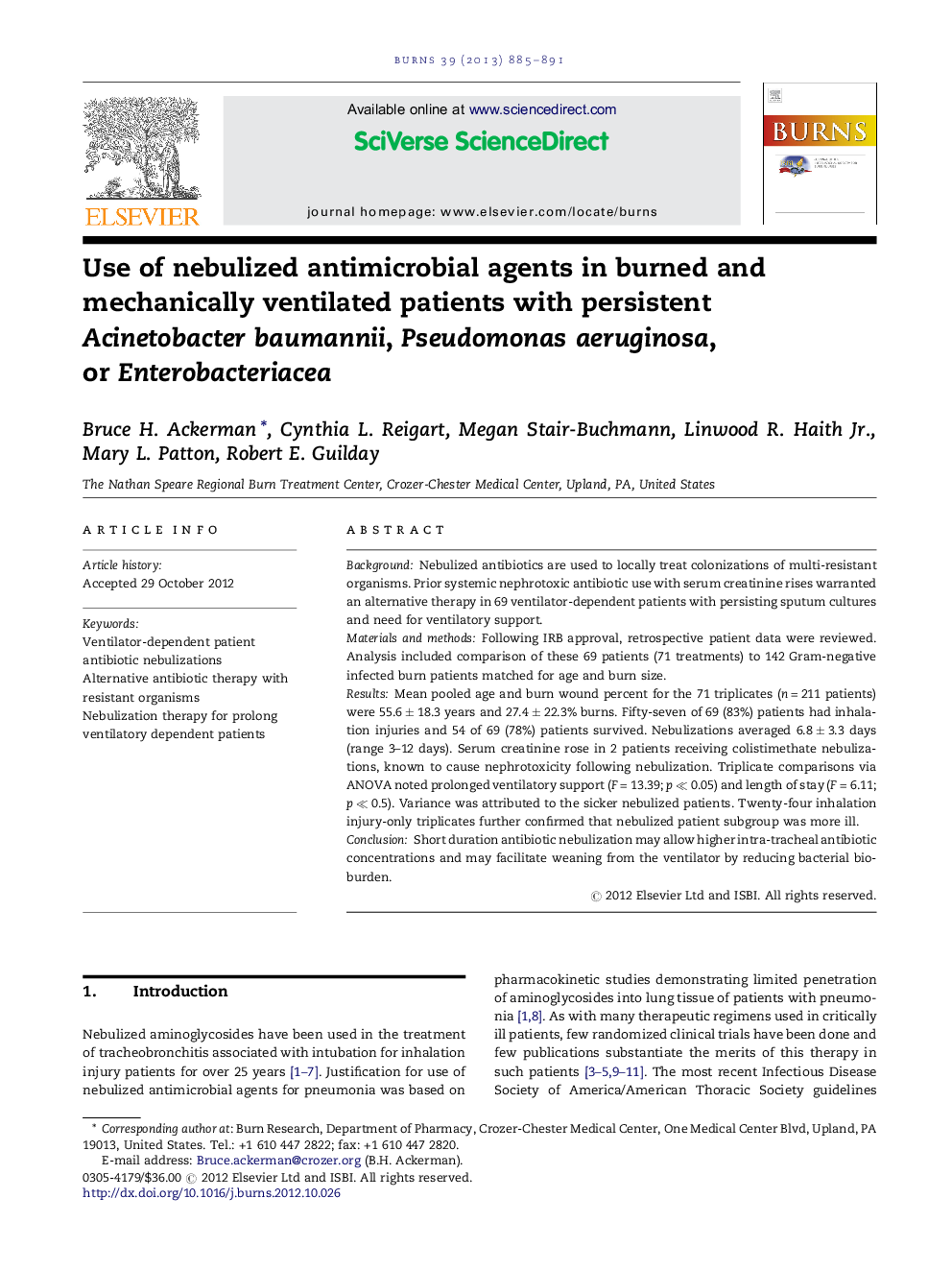| کد مقاله | کد نشریه | سال انتشار | مقاله انگلیسی | نسخه تمام متن |
|---|---|---|---|---|
| 3104887 | 1191667 | 2013 | 7 صفحه PDF | دانلود رایگان |

BackgroundNebulized antibiotics are used to locally treat colonizations of multi-resistant organisms. Prior systemic nephrotoxic antibiotic use with serum creatinine rises warranted an alternative therapy in 69 ventilator-dependent patients with persisting sputum cultures and need for ventilatory support.Materials and methodsFollowing IRB approval, retrospective patient data were reviewed. Analysis included comparison of these 69 patients (71 treatments) to 142 Gram-negative infected burn patients matched for age and burn size.ResultsMean pooled age and burn wound percent for the 71 triplicates (n = 211 patients) were 55.6 ± 18.3 years and 27.4 ± 22.3% burns. Fifty-seven of 69 (83%) patients had inhalation injuries and 54 of 69 (78%) patients survived. Nebulizations averaged 6.8 ± 3.3 days (range 3–12 days). Serum creatinine rose in 2 patients receiving colistimethate nebulizations, known to cause nephrotoxicity following nebulization. Triplicate comparisons via ANOVA noted prolonged ventilatory support (F = 13.39; p ≪ 0.05) and length of stay (F = 6.11; p ≪ 0.5). Variance was attributed to the sicker nebulized patients. Twenty-four inhalation injury-only triplicates further confirmed that nebulized patient subgroup was more ill.ConclusionShort duration antibiotic nebulization may allow higher intra-tracheal antibiotic concentrations and may facilitate weaning from the ventilator by reducing bacterial bioburden.
Journal: Burns - Volume 39, Issue 5, August 2013, Pages 885–891